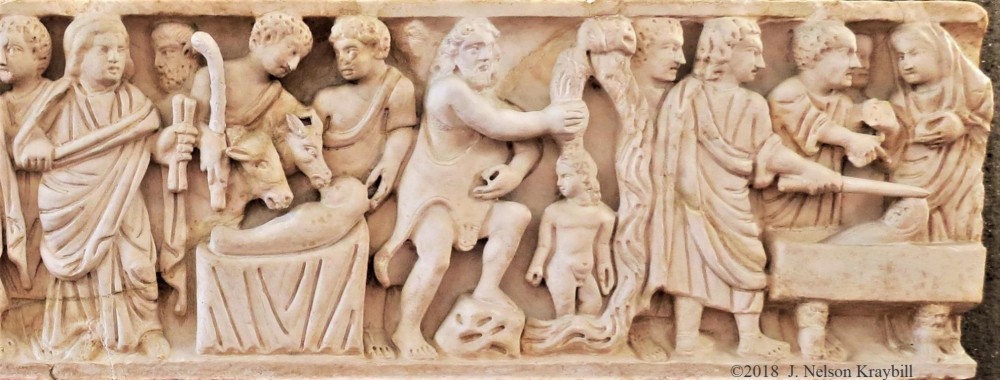
When my earthly sojourn ends, please say that I died, not that I “passed.” The latter happens to footballs and, well . . . to gas. Aversion to death makes our culture prefer euphemism, but followers of Jesus acknowledge death and resurrection at the center of our faith. We name them, and do not fear the end of our physical lives.
Twenty years ago, I was frustrated to find the Pio Cristiano gallery of Early Christian art at Vatican Museums in Rome repeatedly closed. Finally, I appealed up the museum hierarchy until I got to the office of the general manager, who confirmed that the section again was closed. Politely I declared that I would not leave his office without permission to see that collection. Eventually he picked up the phone, spoke something impatient in Italian, and in came a guard–who took me to the collection!
What I found was marvelous art from early Christian catacombs, from the miles of underground tunnels where believers buried loved ones in shelf-like niches in the walls. After Christians laid a body to rest, they covered the niche with tile or marble plates, which they could decorate with words or sculpture. Wealthy families sometimes buried their deceased in a sarcophagus, or sculpted stone coffin.
Pagan people in Rome normally buried their dead in a necropolis (“city of the dead”), much like usual above-ground burial plots in the West today. But Christians named their burial tunnels cemeteries, Greek for “dormitories”! Burial simply provided a place to sleep until the return of Christ and resurrection.
What a window into Early Christian theology of life and death! Images on Christian tombs mostly illustrate bible stories of salvation, such as Noah in the ark receiving an olive leaf, three Hebrew lads worshiping God in the midst of flames, or Jonah being rescued by and from a big fish. New Testament scenes largely were from the Gospels: Jesus healing the sick, multiplying loaves, restoring sight to the blind, and–most prominently–raising Lazarus from the dead.
Christians lost fear of death, making them bold to care even for pagan neighbors when their own family members put them out on the street to die because they had the plague. Early church leader Dionysius says Christians in AD 260 showed such courage during a devastating plague in Egypt, even if it meant they could become ill from the exposure:
“Most of our brother Christians showed unbounded love and loyalty, never sparing themselves and thinking only of one another. Heedless of danger, they took charge of the sick, attending to their every need and ministering to them in Christ, and with them departed this life serenely happy. . . Many, in nursing and curing others, transferred their death to themselves and died in their stead.”
Sociologist Rodney Stark believes such acts of compassion, extended both to Christians and pagans, were a significant factor in the growth of the Early Church. Having no fear in the face of death means we, too, can take big risks to share the love of Jesus.
© 2018 J. Nelson Kraybill *****************************************
I invite you to enter your email address in the designated box at the edge of this webpage if you have not already subscribed, and click Follow. You’ll get a notice every three or four weeks when I put up a new blog post. I will not spam you.
Come with Ellen and me on a Peace Pilgrim walking tour in Galilee and Jerusalem! Dates are May 14-25, 2018, and the pace will be moderate. We will walk parts of the Jesus Trail from Nazareth to Capernaum, and hike at Caesarea Philippi where Jesus took his disciples on retreat in the foothills of Mt Hermon. At Jerusalem we will walk the city walls, trace the triumphal entry route on foot, and travel by vehicle to see more. Note that this tour cannot be a large group, and we are near capacity for registration. Contact TourMagination promptly if you wish to join. See https://www.tourmagination.com/tour/holy-land-peace-pilgrim-walk-jesus/
Thanks, Nelson. I look forward to new blog posts.
LikeLike
Thanks
LikeLike
Thank you for this blog post!
LikeLike